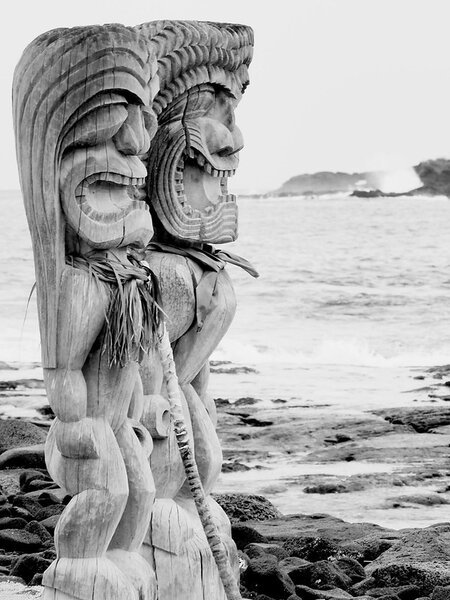I have written 2 blog posts featuring a total of 20 mazes that I abandoned for one reason or another. You can read them here:
Why I abandoned these 10 mazes - Mistakes in Maze making
10 More Abandoned Mazes - Mistakes in Maze Making
I took the time to evaluate the mazes and see why they did not work and try to determine - could they be salvaged ? Today I present a case study for improving one of those mazes, the Tiki Totem Maze which ended up becoming Maze of the Week #86. Here is my analysis from the previous blog:
“Abandoned Maze #4 - Tiki Totem Maze
I thought this would be a good idea. Tiki totems are so cool. I can’t quite put my finger on this. It just isn’t good enough to be on the site as a weekly featured maze. I think it MIGHT be able to be fixed. Add color to the totem, and to make it more interesting - SHADOWS. I would also try a more complex maze structure vs the current kids level format. But I can’t be sure that will be enough…so it will not get done ….or it will. We’ll see. Mistake made: Not enough details / interest”
And I must say, for a maze to be recoverable, the mistake made of not enough details/interest is a giveaway that the maze is salvageable with some additional work. Now let’s look at that original maze, also known as the ‘before’:
And here are the changes I made to (hopefully) improve the maze:
1. Color - The actual tiki is not black and white (nor does it have brown accents as the initial maze pathways imply. I went with the weathered grey color of the tiki. I switched the color of the walls to a complementary charcoal color.
2. Shadows added - It is a tiki on a beach so it is in the sun. I went with lots of shadows ! This really shows the shape of the tiki better, especially the eye area. I took the extra time to shadow the nose, neck, and under the pecs.
3. Maze placement - The tiki is full length and sits in the sand on a beach, but I only made the top portion. It is also surrounded by a sea of white nothingness. After considering adding the full totem, I instead decided to place the totem against the bottom of the page which allowed for….
4. Beach scene added - By moving the totem forward there is a large background to fill. That was a perfect place to add a background that included a beach, a palm tree and the sky. I spent 70% of the time improving this maze working on the leaves of the tree, then used a gradient color to accurately color the trunk. I did my best to add foam to the break of the water at the shore.
5. Start and Goal changed - The placement also meant a change from arrows to an internal Start and Goal using lettering.
6. Sky addition - The white sky felt like empty space. Might as well finish the color. I went cloudless like a great day at the beach (with sunscreen).
7. Lettering and branding - Add the name of the maze and my branding both of which were previously missing.
Also considered but not updated:
I decided to not change the actual maze beyond minor moves. It remains easy for kids but looks a lot better for everyone; Something on the water like a boat or a shark fin, or the sky like the sun or some birds; The full totem poll (as mentioned above).
And now the “After”. The new maze:
I think this is an improvement. What do you think ? Should I have added more details ?
This is how the Tiki Totem became Maze of the Week #86 after sitting on the shelf for over 2 years ! Maze download is available !









